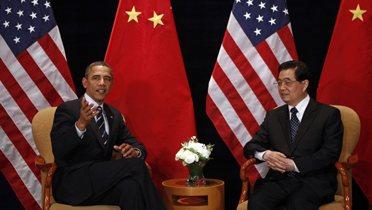Content from the Brookings-Tsinghua Public Policy Center is now archived. Since October 1, 2020, Brookings has maintained a limited partnership with Tsinghua University School of Public Policy and Management that is intended to facilitate jointly organized dialogues, meetings, and/or events.
Trade with China has led to the loss of manufacturing jobs in the United States and put downward pressure on wages for blue-collar jobs here. This is a real problem and campaigns in both political parties are grappling with how to address it. In a speech this week, Donald Trump proposed high tariffs on imports of Chinese goods, labeling the country a “currency manipulator,” and ripping up the Trans-Pacific Partnership (TPP). These measures are not likely to reverse the damage that trade has done to blue-collar workers in the United States.
First, on high tariffs: There is a long-term trend for manufacturing employment in the United States to decline as a share of employment. This reflects the fact that automation and productivity growth are easier in manufacturing than in services. The United States is still a manufacturing powerhouse from the point of view of production, but it simply does not take that many workers to produce the output. Trade with China accelerated that trend, and that was bad for the United States because slow adjustment is easier than the rapid adjustment that occurred. But imposing tariffs on Chinese imports now is truly closing the barn door after the horse has left. Jobs in apparel and footwear or the low end of electronics are not coming back to the United States. Tariffs aimed at China will divert that production to other developing countries. If we try to keep out imports from all of the low-wage countries then we are contemplating an end to the open trading system that has been a source of political and economic stability in the world. Economic results for the United States are not likely to be good even if there is no retaliation. But there is almost certain to be retaliation, especially from China which is a powerful and nationalistic country.
The fact that protectionism is likely to backfire and make matters worse for American workers does not mean that other measures would not work. Spending public money on infrastructure is the most obvious measure—it would create jobs immediately and enhance the productivity of the economy down the road. Improving education at all levels from pre-K through adult education is another obvious measure. Workers and communities are looking for more support in the face of uncertainties created by globalization, and providing that support will be more effective than trying to wall off the U.S. economy from the rest of the world.
Second, on currency manipulation: This is also a matter of fighting the last war. Ten years ago China was intervening heavily to keep the value of its currency low. But between 2005 and 2015 the yuan appreciated about 25 percent against the dollar, and this was one factor that brought down its large current account surplus (the broadest measure of its trade surplus) from 10.1 percent of gross domestic product in 2007 to 2.7 percent in 2015. Over the past year there has been pressure in Chinese currency markets for the yuan to depreciate because of large capital outflows in the face of diminishing investment opportunities at home. The Chinese central bank has been intervening to keep the currency high, not low. We should be happy that China is intervening to keep the currency high because this is a source of stability in the world economy at the moment. Congress passed a law in 2015 creating a rigorous definition of a currency manipulator and China does not meet that standard because it is selling reserves not accumulating reserves.
Third, on TPP: China is not a negotiating party to the Trans-Pacific Partnership and if the agreement is implemented, China cannot join without the approval of the United States. U.S. relations with the countries negotiating the TPP provide an interesting contrast to U.S. relations with China. It happens that the TPP partners have about the same sized economy as China—around $10 trillion. But the United States has much more balanced trade with the TPP partners: We export six times as much to them as to China. And we have 15 times as much investment in the TPP partners as we have in China. In other words, the TPP group is a much more open set of economies. The TPP agreement would deepen the integration among us while addressing important issues of labor and environmental standards.
The fact that China remains relatively closed to imports and to inward investment is a source of frustration for the United States. Frankly, we have little leverage over China to force them to open up. China’s communist leaders are much more concerned with domestic political control and territorial disputes with neighbors than with economic relations with the United States. Protectionist measures aimed at China are likely to be met by Chinese retaliation, not by China suddenly opening up. For the United States, deepening integration with the like-minded countries that have negotiated the TPP, as well as with European partners, is a sensible strategy. There are many good jobs in the United States tied to our exports and we want to encourage the expansion of a rules-based trading system, not spark a trade war that is likely to have no winners.







Commentary
Trump and China
June 30, 2016